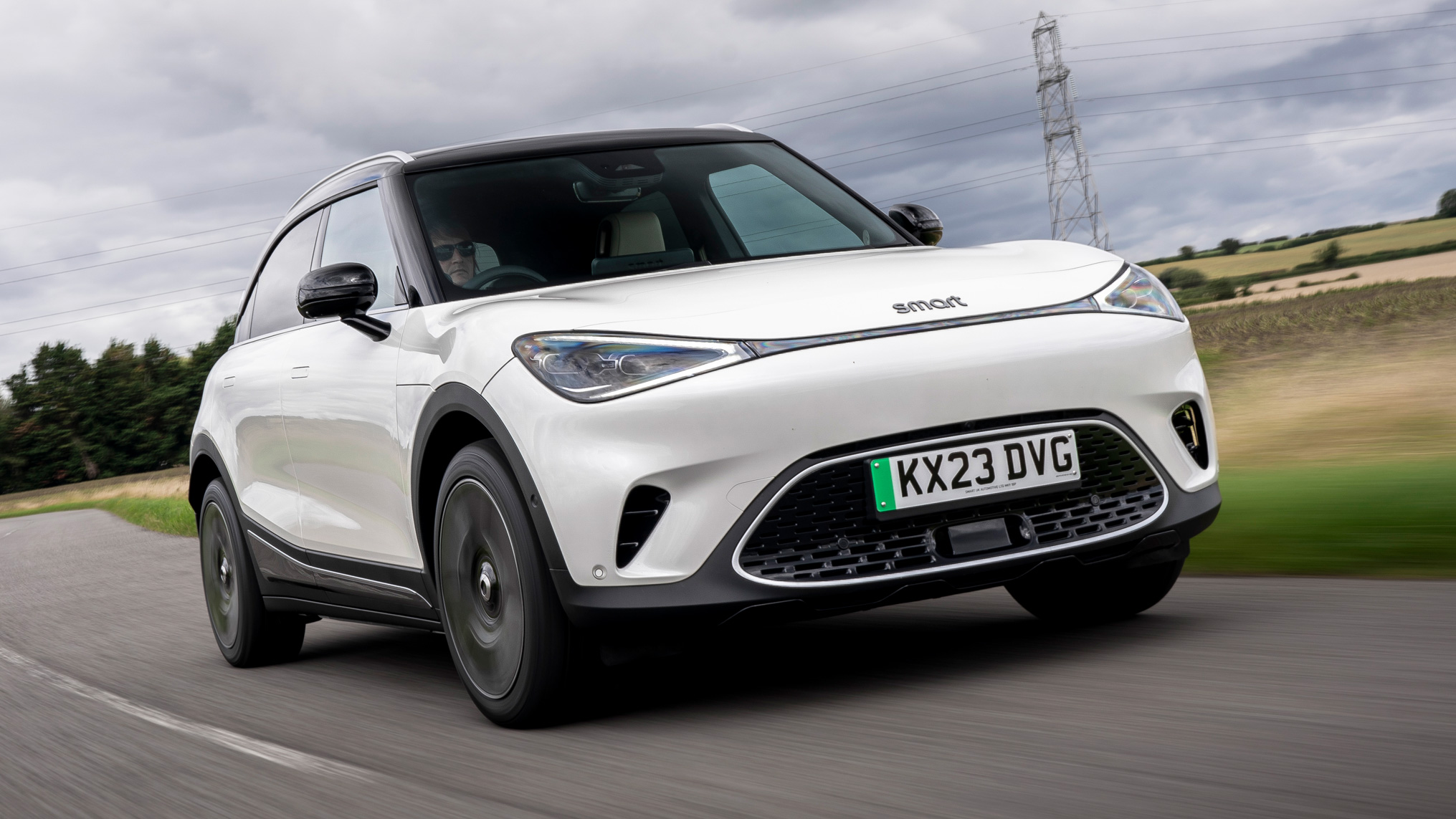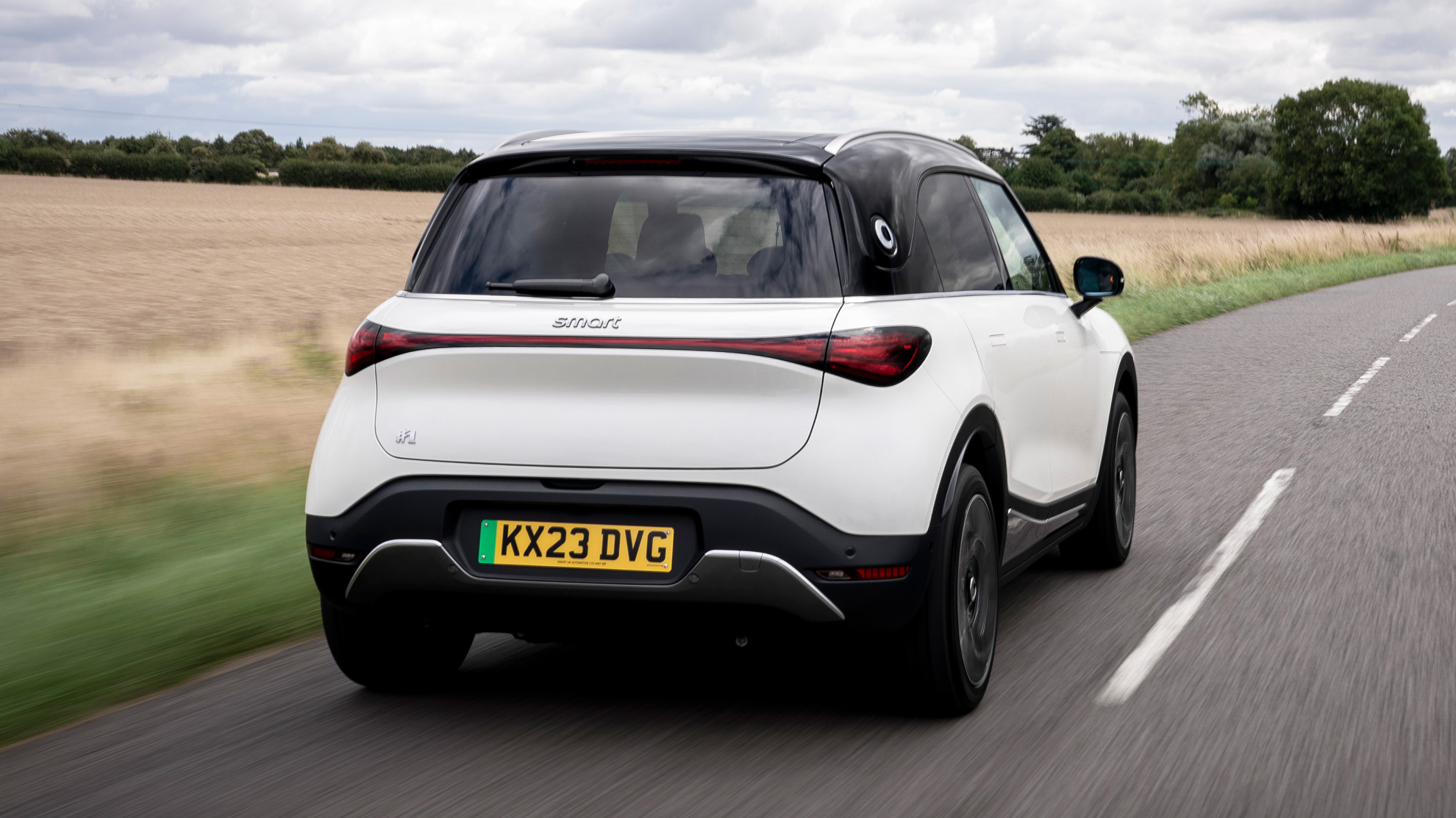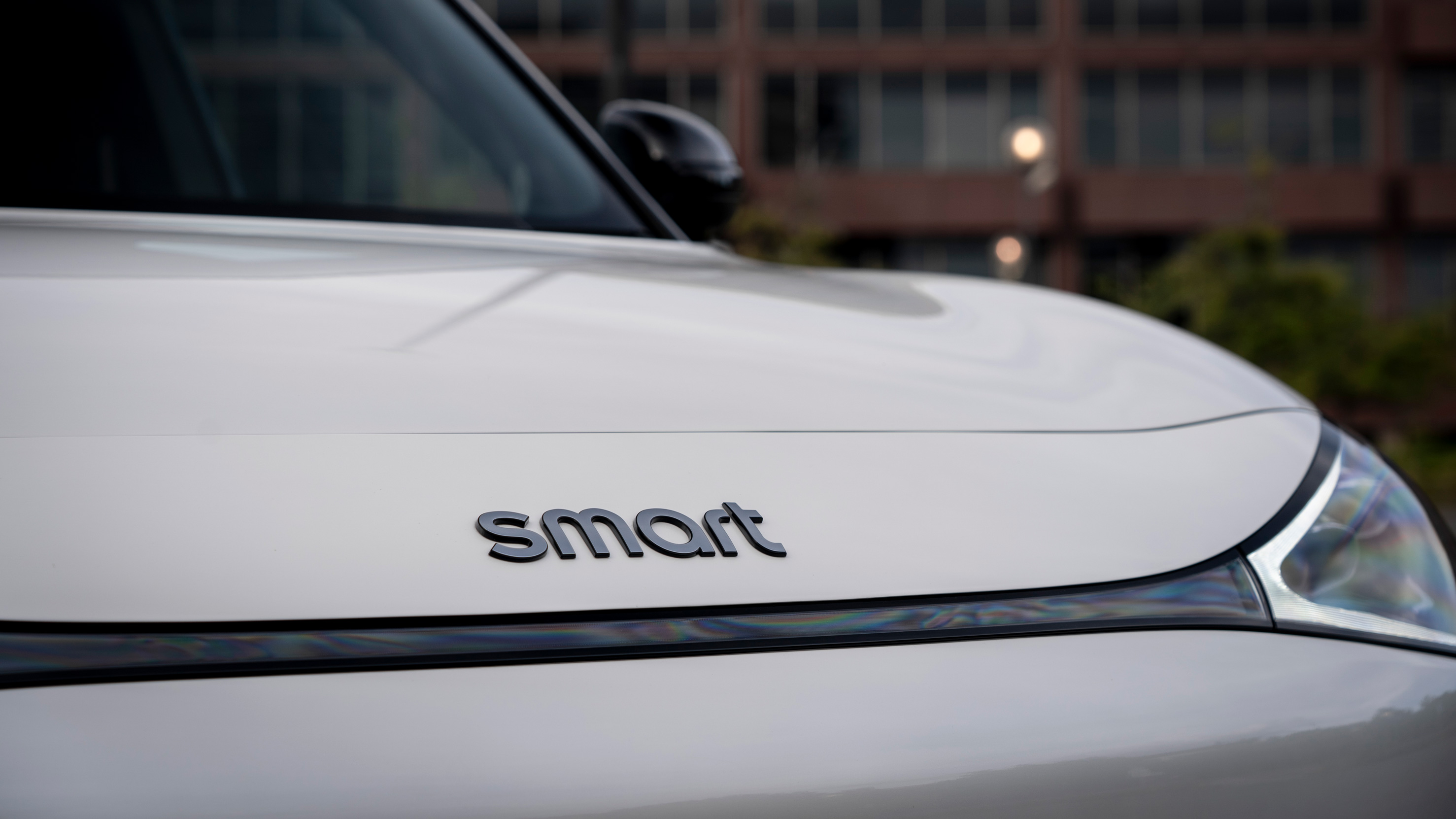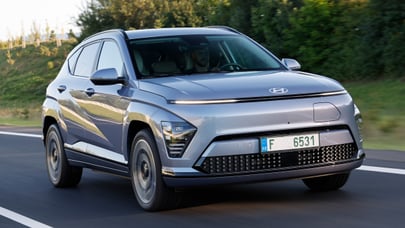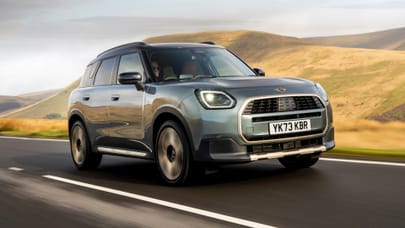
Good stuff
Comfort and refinement, spacious seating, well made - it’s a decent electric crossover
Bad stuff
But is that really what Smart stands for? Small boot, infotainment is messy and confusing
Overview
What is it?
Well, there’s quite a lot to unpack here, but let’s start by clearing up the name. This is the smart #1. And yes, you are meant to say “Hashtag One” in full like someone who has just discovered this crazy new piece of tech called ‘The Internet’. Obviously we won’t, we’ll just call it the ‘One’ like any normal functioning human being.
IS IT REALLY A SMART CAR?
Here’s where we have to start picking apart Smart’s backstory. Smart means the ForTwo, right? That titchy urban two-seater that everyone greeted as the future of city mobility and then not enough people bought to make it viable. It was a joint project with Swatch (the watch company) originally, but then Merc took control using outside partners to assist.
So the first four-seater, the ForFour was a joint venture with Mitsubishi. There were other models: the curious Crossblade and the well-received Roadster, for instance, but Mercedes has never seemed to have its heart fully in the project. Yet nor could it bring itself to abandon Smart despite the fact it's lost money consistently. The ForTwo and ForFour have soldiered on through various facelifts and reinventions, including going all-electric from 2019.
AND NOW WE HAVE A PROPER REINVENTION?
We do. In June 2020 Smart Europe GmbH was reborn as a 50:50 joint venture between Mercedes-Benz and the ever-expanding Chinese firm Geely. Sales of the ForTwo will continue until around 2024, but the plan is to abandon the radical city strategy and copy everyone else with a surge into the mainstream crossover market.
We know. Just the same as everyone else. Our fault for not buying enough of the funky stuff while we had the chance.
SO WHAT ACTUALLY IS THE #1?
A very carefully targeted car from a very carefully targeted brand. Basically Smart has seen what BMW has done with Mini and copied them. Mini deserted small clever cars immediately in favour of a retro-funkiness that has made it very successful. Mercedes wants Smart to do the same and has worked out the quickest/best way of achieving that is to buy in the bits it needs. Hence the joint venture with Geely (the firm that also owns Lotus and Volvo – so inevitably this will have something in common with the forthcoming Volvo EX30).
SO THE KEY RIVAL IS THE MINI COUNTRYMAN?
Exactly that, although the list of rivals is ridiculously lengthy, ranging from hatchbacks such as the recently improved VW ID.3 to crossovers like the soon-to-be-replaced Hyundai Kona Electric, Toyota bZ4X, Skoda Enyaq, BYD Atto3, Kia Soul EV etc, etc.
Underneath it’s based on a dedicated EV platform supplied by Geely (SEA-2 for all you platform nerds out there), with all versions getting a 62kWh (net) battery for a maximum claimed range of 273 miles. Up top all design inside and out is done by Mercedes, as is the suspension tuning.
WHAT TRIM LEVELS CAN I HAVE?
There are two main trim levels, Pro+ and Premium. The former is the entry version, costing £35,950; the latter adds kit (most of which you probably don’t need: head up display, matrix LED lights, Beats sound system and auto park assist) and costs £3,000 more.
There’s a quirk, though. Both get a 264bhp motor that drives the rear wheels with 253lb ft of torque. However, despite the stats being the same the Premium model gets a different motor and inverter to eke out 273 miles of range. The Pro+ makes do with 260 miles. A smaller battery entry-level iteration has been mooted, but not confirmed. All versions can currently charge at up to 150kW, which means a 10 to 80 per cent top-up in less than 30 minutes. They can also accept 22kW AC charging, which could be handy if you’re able to charge on three-phase at work.
HOW QUICK ARE THEY?
The claim is 0-62mph in 6.7 seconds, and they feel easily that brisk – although being rear-drive only they can trigger the traction control if you get a bit hasty with the throttle out of junctions. There’s an answer to that though: have the 4WD Brabus version.
SORRY, DID YOU SAY BRABUS?
We did. Brabus does have history with Smart of course, but a lot of the time the Bottrop-based tuner has been limited to styling bits and has had to leave the powertrain alone. We’d guess they’ve had precious little to do with it this time round as well, although the power figure is a more suitable 422bhp.
This brings the 0-62mph sprint down to a faintly ridiculous 3.9s. In a family crossover. Bonkers, but not unique. There are also very quick 4WD versions of the Volvo XC40 Recharge, Tesla Model Y, Kia EV6 and the new MG4 XPower. You don’t need them. In every case the less powerful car is the better to drive. Except here. More on that in the Driving tab.
You’ll be able to spot a Brabus by its aero-spec 19-inch wheels, sporty bodykit with extended spoiler, fake vents in front of the bonnet and red accents. However, just as Smart has changed, we’re not to think of Brabus as a sporting version now, but as a luxury flagship.
WHAT ELSE DO I NEED TO KNOW?
The interior is where you’ll see most of the Mercedes influence with some recognisable parts bin bits on the centre console. The infotainment setup is all new though, with fancy gaming tech and an artificially intelligent fox that acts as a travel companion. Not as wacky as it sounds though, sadly. It’s got spacious back seats, but a small boot. Click through to the Interior tab for more.
Proportions-wise there’s a certain overlap with the Kia Soul EV, but it’s not as aerodynamic as that sleek, integrated front end might suggest. The drag factor is 0.29Cd. But it’s quiet on the move and majors on comfort and refinement.
HOW MUCH WILL IT COST?
From £35,950. There’s an inevitable Launch Edition costing £39,450 that’s limited to just 100 cars in the UK, while the Brabus retails at £43,450.
What's the verdict?
It’s yet another competent, inoffensive but slightly limited crossover entering into a very congested market. The styling is rounded and playful (apart from the toupee-like rear roof treatment) and it feels well made and bright inside. The Geely underpinnings offer decent range and road manners and it comes across as class competitive. But not distinctive, interesting or different. It's a Kia Soul EV wrapped up in a different body. But then look where distinctive and different got Smart last time round…
It's just a shame that the innovation that used to characterise Smart has gone too. This is a generic crossover built on a borrowed platform. If that doesn’t matter to you, if you can see past the pointlessly tiny frunk and small boot, and the often irritating infotainment and driver awareness systems, then the #1 (yes, we’ve spelled it out) is tempting because it drives cleanly, has good visibility and seems robust. It’s also commendably good value – and if you’re a straight line shove addict, the Brabus version delivers plenty of that.
The Rivals
Trending this week
- Car Review
BMW iX3




